Hatchback News
.jpg)
Watch out BYD Seagull and 2026 Hyundai Inster! Honda’s latest car is unveiled as a city-slicking electric hatch - but will it land in Australia?
Read the article
By Tom White · 30 Jul 2025
Honda has revealed its latest new offering, a fully electric version of its N-One hatch.The retro-styled N-One has been a regular fixture of Honda’s Japanese domestic line-up since 2012, and the new electric version is designed to be the “Ideal EV for the Japanese market.”The boxy hatch, which is designed to fit into Japan’s strict Kei classification, is equipped with a large enough battery for a 270km driving range to the WLTC procedure, complete with vehicle-to-load and vehicle-to-home features.It maintains the combustion version’s retro exterior design (referencing Honda’s original N360 Kei car from the late 1960s) and has a very minimalistic and space-efficient interior design. Honda said the bonnet and the top of the instrument panel are lined up to improve visibility and accentuate the width of the car, while physical buttons and dials are intentionally maintained in the centre of the dash for ease of use.The N-One e’s bumpers are made from recycled materials discarded from other Hondas. In addition, a bio-resin is used for the dash cladding, and various plastics on the interior are made from recycled PET bottles. As a final touch, the floor carpet and insulation is made from recycled clothes sourced from Honda employees.Like other Kei-class vehicles, the exterior dimensions are small but the rear two seats offer enough room to seat adults, and they can also fold completely flush with the boot floor to maximise storage. The N-One e also scores the brand’s signature magic seats, which can fold up to the seat backs to suit taller objects.Full specifications, including elements like motor power, charging speed, and battery capacity have yet to be revealed, but it would be unsurprising for them to match the related N-Van e which has already launched to the Japanese market.This would mean a 29.6kWh battery pack able to charge at 50kW on DC for a 30 minute charge time, or a 4.5 hour charge time on a 6kW AC connector. The vehicle-to-load or vehicle-to-home mode has a maximum output of 1500W.The front-mounted electric motor in the N-Van is expected to be shared with the N-One e and produces just 47kW/162Nm. It features a single-pedal driving mode in both models.Sadly, despite it being built in right-hand drive, the N-One e is likely to remain a Japanese domestic market model. Strict safety standards and the cost to comply the cars for the Australian market generally make these models too expensive or otherwise uncompetitive.Mitsubishi recently evaluated bringing its equivalent EV, the eKX to Australia, but it shelved the idea after admitting that it would be “three star ANCAP or less” and that it was likely to cost more than $30,000 once the work had been completed to comply it for our market.Hyundai recently launched a compact electric city car, the Inster, which starts from $39,000, although it offers significantly more driving range, claimed at up to 327km, and has nearly double the electric motor output.BYD is also considering importing its affordable city-sized electric car, the Seagull, which could have a price-tag in the mid-$20k region.Honda is imminently set to announce new model plans for the Australian market, although its footprint has shrunk in recent years. Currently the Japanese brand offers the HR-V small SUV, ZR-V and CR-V mid-sizers, Civic hatch, and Accord sedan.
.jpg)
‘We know they can make safer cars’: ANCAP points to new Chinese brands such as BYD, Chery and JAC to show more safety tech doesn't have to result in higher prices
Read the article
By Tom White · 30 Jul 2025
The Australasian New Car Assessment Program's (ANCAP) Chief Executive Officer Carla Hoorweg said criticism of its testing protocols was expected given how competitive our new car market now is.Hoorweg added criticism of ANCAP was arguably not just due to established manufacturers having to stump up for increased costs or decreased star ratings, but also because an increasing amount of new five-star ANCAP scores were being achieved by newcomers to the market from China, which were already putting price pressure on rivals.New cars built in China now account for the most new five-star ratings since 2023, accounting for 32 per cent of all new five-star rated models. In comparison, cars sourced from Japan and Germany have shrunk to 19 and 18 per cent respectively.82 per cent of cars put to the test from Japan have a five star rating, while 94 per cent of cars sourced from Germany have a five-star rating. Cars sourced from China are holding an 86 per cent five-star rating from 2023.“It’s disappointing because we know those brands can deliver five star products, so we hope they’re trying to bring those vehicles in. It is a competitive market though, so obviously they’re going to try to change the playing field. is one way they try to do that."The safety authority has been accused of effectively stopping manufacturers from bringing in more affordable cars or versions of cars built in markets with lower safety requirements due to its ever increasing safety standards, which Hoorweg agreed was a source of frustration for manufactures.“It’s true, they wouldn’t be as safe,” she said. “We exist to say, 'you can bring that ASEAN version, but it’s not as safe and it’s not what consumers expect'.”One recent notable example affected by both a potentially low ANCAP score and an increase to Australia’s base new-car safety standards in the Australian Design rules, is Mitsubishi’s ASX successor. If it weren't for ANCAP safety standards the hybrid XForce small SUV sold in right-hand drive for Thailand, Malaysia and Indonesia could have made it Down Under.Mitsubishi has been forced to import an ASX based on the Renault Captur from Europe, which will be much more expensive than the outgoing version. Mitsubishi cited high development costs to upgrade the XForce for ruling it out.Some new vehicles from Australia’s favourite brands, which have received less than five-stars in recent years, include the new Suzuki Swift that got one star due to poor crash performance. The Hyundai i30 sedan got three stars for the lack of advanced auto braking and blind spot monitoring as standard as well as poor vulnerable road user protection. The Mahindra Scorpio 4x4 and MG5 sedan that both scored zero stars for poor occupant protection and missing key active safety equipment.MG said it was able to bring its cars in at a lower price by not including all the required active safety equipment, while Mahindra argued its 4x4 comfortably met Australian Design Rules and was rated highly by the far more lenient Global NCAP, which focuses mainly on basic features and structural crash performance.MG brought a raft of upgrades to its MG5 a year after its 2023 launch, which resulted in a revised three-star rating.Hoorweg said some manufacturers would rather challenge the existence of ANCAP altogether, or criticise its messaging, as its increasingly harsh safety standards factor into these new model choices, but the reality is prices ultimately stabilise as companies package together various key technologies.“A lot of arguments get run, but there’s a lot of components which go into a vehicle and there’s a lot which goes into the cost of the car," said Hoorweg.“Safety is one element but what we see is the unit cost goes down, so when a new technology is coming through for the first time it has an expensive per unit cost but that decreases over time and things get bundled together so it decreases .“We’ve seen the real cost of a vehicle which factors in what you’re actually getting. The cost has stuck around $25,000 for a very long time, but what you’re actually getting is a lot more, so the real cost to the consumer has actually decreased. Manufacturers have actually done a great job of keeping those prices that low for a very long time, but we don’t want to see safety be the element that gets blamed for that ,” she said.Hoorweg noted calls to simply allow ratings to fall back to those from vehicle’s home countries or ratings out of Europe would result in some trying to take advantage of the lack of local standards.“There’s a huge opportunity to de-spec cars due to the differences between ADRs and European design rules,” she said.Hoorweg pointed to the Suzuki Swift as being a prime example of a car, which had alarming omissions in the specification delivered to Australia, that resulted in its one-star ANCAP score and three-star EuroNCAP score.Hoorweg added the language on five-star-or-nothing may have been softened a little, the body wouldn't back down on ratcheting standards up every few years, with a new framework starting in January 2026 focusing more heavily on driver assist systems and post-crash survivability."I think there’s enough consumer support and fleet support that there’s not much interest in dropping standards." she said.Even the Kia Tasman, which just received a five-star ANCAP rating was notable for the rating only applying to variants equipped with a unique bumper designed to maximise pedestrian safety. High-grade models likely to be popular with private buyers, like the top-spec off-road focused X-Pro are specifically excluded from the score.
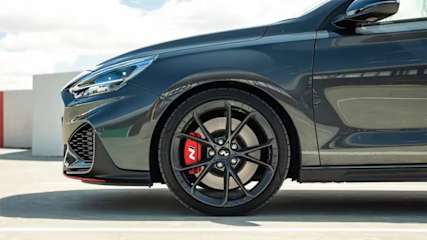
Hybrid hot hatches coming? Hyundai exec confirms hybrid car power for next-gen Hyundai i30 N and siblings, plus more high-performance electric cars in the works
Read the article
By Chris Thompson · 23 Jul 2025
Hyundai’s top brass has hinted at the imminent electrification of its performance N division, with a clear direction towards hybrid hot hatches and cheaper EVs.
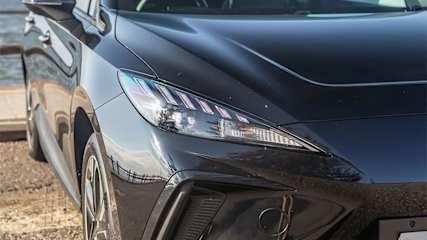
‘Aggressively priced’ new electric car confirmed: 2028 MG2 locked in for launch to rival BYD and GWM’s cheapest EVs: report
Read the article
By Chris Thompson · 21 Jul 2025
There’s a new entry-level electric car on the way, according to reports from the UK, and it’s one that could set the sales charts alight.

Is your car affected? Nearly 70,000 Toyotas recalled
Read the article
By Tom White · 18 Jul 2025
Nearly 70,000 Toyotas caught up in massive recall

Truth about EV batteries exposed: New information reveals just how good electric car battery life is in the Volkswagen ID.3, busting one of the biggest hurdles of EV ownership
Read the article
By Dom Tripolone · 17 Jul 2025
Rumours of the quick demise of electric car batteries have been greatly exaggerated.
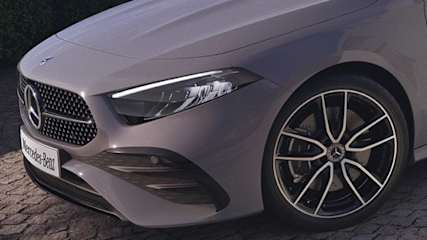
Merc pumps up the value! 2026 Mercedes small and medium special edition models taking the fight to BMW 3 Series, Audi Q3, Lexus NX and VW T-Roc
Read the article
By James Cleary · 10 Jul 2025
Mercedes-Benz has kicked off the new financial year with value-add special edition versions of its key small and medium hatch, sedan and SUV models claimed to add up to $4800 worth of extra features at no additional cost.
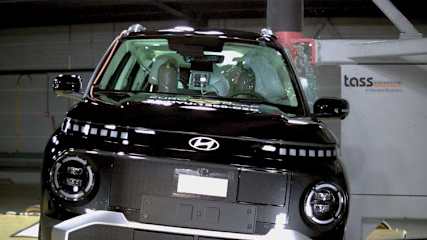
Big hit for another new Hyundai: 2026 Hyundai Inster electric hatchback misses out on a full five-star ANCAP safety rating like the Kona, i30 Sedan and Venue, while the Polestar 4 and Subaru Forester family SUVs get full five-star ratings
Read the article
By Jack Quick · 10 Jul 2025
Australia’s independent crash testing authority, ANCAP, has just detailed its latest dump of safety ratings.

The biggest winners and losers so far in 2025: BYD and Chery experience massive sales spike, while Tesla and Peugeot sales fall
Read the article
By Jack Quick · 09 Jul 2025
We’ve now reached the halfway point of 2025 and new vehicle sales are a little cooler than they were last year.According to VFACTS, a total of 608,811 new vehicles have been sold in the first six months of 2025, which is down 3.7 per cent year-on-year.The following is a breakdown of the brands that have experienced the biggest amount of sales growth or decline in the first half of 2025.We’ve only included mainstream and select premium brands in this story, because while niche luxury brands like Rolls-Royce and Bentley may have experienced a large change in sales growth or decline, they come from a much lower base.This Chinese brand has been surging up the sales charts ever since returning to Australian shores in 2023.Chery’s biggest seller by far this year has been the cut-price Tiggo 4 Pro (7996 sales YTD). Its crown of the cheapest SUV in Australia was recently snatched by the Indian-made Mahindra XUV 3XO.The Chery Tiggo 8 Pro Max was the Chinese carmaker’s model with the biggest growth in sales (1386 sales YTD, up 507.9 per cent), though it’s worth noting this car only launched locally in May 2024.China’s BYD experienced the second highest sales growth in Australia. In fact, in June it was the fifth best-selling brand.BYD’s best-seller was the popular Shark 6 plug-in hybrid (PHEV) ute (10,424 sales). It was actually the fourth best-selling ute in June, behind the Ford Ranger, Toyota HiLux and Isuzu D-Max.Another BYD model that has experienced a huge surge in sales is the Sealion 6 PHEV (4375 sales YTD, up 807.7 per cent), though this car only launched in May 2024.Mini’s sales growth comes from a considerably lower base than Chery and BYD, but its year-to-date sales are still up 80.4 per cent year-on-year.The Mini Countryman is one of the biggest reasons for the brand’s sales growth. A total of 1135 examples were sold in the first six months of 2025, which is up 155.1 per cent year-on-year.From an overall year-to-date sales volume perspective, however, the Mini Cooper did outsell the Countryman, with 1181 examples sold. This is up 52.2 per cent year-on-year.Cupra has slowly but steadily been increasing its sales in Australia since it launched in 2022.The Formentor SUV has been the brand’s best-seller since it arrived, with 909 examples sold in the first half of 2025. This is up 50.0 per cent year-on-year.The Born hatchback is another model on the rise for the brand, with 309 examples sold in the first half of 2025. This is up 19.3 per cent year-on-year.Polestar has a low sales base compared to rival brands in Australia, but it has picked up in the first half of 2025.The recently introduced Polestar 4 is currently the brand’s best-seller with 676 examples sold so far this year.However, only 396 examples of the Polestar 2 were sold in the first half of 2025, which is down 58.3 per cent year-on-year. Only 30 examples of the Polestar 3 were also sold over the same period.Even though the Tesla Model Y was the third best-selling car in June, it didn’t make up for the sales slump the US electric vehicle (EV) brand has been experiencing so far this year.A total of 10,431 examples of the Model Y were sold in the first six months of 2025, which is down 16.7 per cent year-on-year. This is despite the fact it launched in a new-generation guise a few months ago.Sales for the Model 3 also took a nosedive with 3175 examples sold so far this year. This is down 65.0 per cent year-on-year.The French brand doesn’t have a massive sales base in Australia to begin with, but it shrunk further in the first six months of 2025. This is despite the fact it has shaken up its product offerings and introduced more hybrids.Sales for virtually all Peugeots were down year-to-date compared to the same point last year, except for the 408 liftback. A total of 58 have been sold, which is up 48.7 per cent year-on-year.Overlooking the Peugeot 508 (2 sales YTD, down 94.6 per cent) which has been axed locally, the model that took the biggest hit in sales volume was the 2008 (111 sales, down 61.1 per cent).This Korean brand formerly known as SsangYong has been going through its second rebrand in two years and it has clearly taken a hit to its sales so far in 2025.KGM’s current best-seller has been the Musso dual-cab ute for a considerable amount of time now, however only 1131 examples were sold in the first half of 2025, which is down 44.2 per cent year-on-year.The model that saw the sharpest downturn in sales is the Korando. Only 79 examples have been sold year-to-date, which is down 71.0 per cent year-on-year.Without taking the Fiat Professional commercial vehicle brand into consideration, this Italian brand only sells small hatchbacks.A total of 207 examples of the Fiat 500 and Abarth counterparts were sold in the first half of 2025. This is down 28.6 per cent year-on-year.While sales for the regular Fiat brand are slowing, sales for the Fiat Ducato (sold under Fiat Professional) have been booming. A total of 708 examples were sold in the first half of 2025, which is up 32.8 per cent year-on-year.Local sales for the Czech brand have been sliding for a few years now, but there are new and refreshed products in the pipeline which will potentially pump up the sales numbers in the coming months.Sales for Skoda’s best-seller, the Kodiaq SUV, have remained steady in the first half of 2025 despite just launching in new-generation guise. A total of 688 examples were sold, which is down 2.4 per cent year-on-year.All Skoda models experienced a downturn in sales in the first half of 2025 compared to the same period last year. The model with the biggest decline is the Scala hatchback (76 examples YTD, down 67.7 per cent).
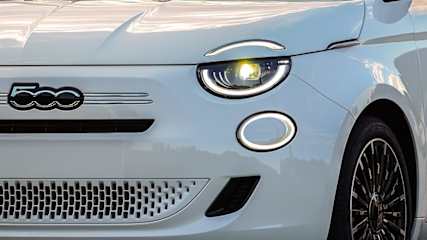
Petrol power returns to iconic hatchback: 2026 Fiat 500 to gain fuel-sipping mild hybrid engine but will it come to Australia to battle MG3, Suzuki Swift and Kia Picanto?
Read the article
By Tim Nicholson · 08 Jul 2025
Fiat is bringing back petrol power to its iconic 500 hatchback after committing to going electric only.The bambino was a petrol-only model from when it was reborn in 2007 until parent company Stellantis launched the second-gen version of the modern era as an electric vehicle, the 500e.Fiat will use the 500e as the basis for a new mild hybrid petrol version that will begin production at Fiat’s spiritual home in Turin, Italy in November this year.Official images reveal that the new 500 will look much the same as the 500e, although the petrol car gets a tweaked grille to aid air flow.The move to retrofit the 500e as an internal combustion engine variant comes after sales of the 500e and the related Abarth 500e hot hatch have slowed, leading to multiple production pauses at the Mirafiori plant.The 2007 petrol 500 went out of production a few years ago after no longer meeting Europe’s emissions standards.Fiat’s new 500 will be offered in hatchback and cabriolet body styles, and in good news for motoring enthusiasts, it will also be offered with a six-speed manual gearbox.It is powered by a 1.0-litre three-cylinder ‘Firefly’ mild hybrid petrol engine, likely the same unit found in the new Panda. The mild hybrid setup is a 12-volt system that Fiat says helps improve fuel efficiency, however official fuel figures are yet to be confirmed.Inside the 500 comes with Fiat’s Uconnect 5 multimedia system linked to a customisable 10.25-inch touchscreen, as well as a 7.0-inch digital driver’s display and wireless Apple CarPlay and Android Auto.A spokesperson for Stellantis Australia told CarsGuide the mild hybrid 500 is not under consideration for Australia, for now.If it gets the green light for Australia it will compete against other micro and light combustion-powered hatchbacks including the MG3, Suzuki Swift and Kia Picanto.Fiat CEO and Global CMO of Stellantis Olivier François described the return of the petrol 500 to the Turin plant as a win.“Bringing the 500 Hybrid back to Mirafiori is a promise kept - a win driven by a committed team that chose to bet on the customer and the future,” he said.“This factory is more than just a production site; it’s Fiat’s home, the beating heart of a story that began in 1957 with Dante Giacosa and today stands as a hub of Stellantis innovation in Europe. Our industrial plan for Italy puts Mirafiori and the 500 at the center of our revival. In November, we’ll celebrate this milestone with the special edition ‘500 Torino’—a tribute to the city, its workers, and our roots. Turin means Fiat, and Fiat means Turin. That’s why the official launch will take place here, in our city.”




